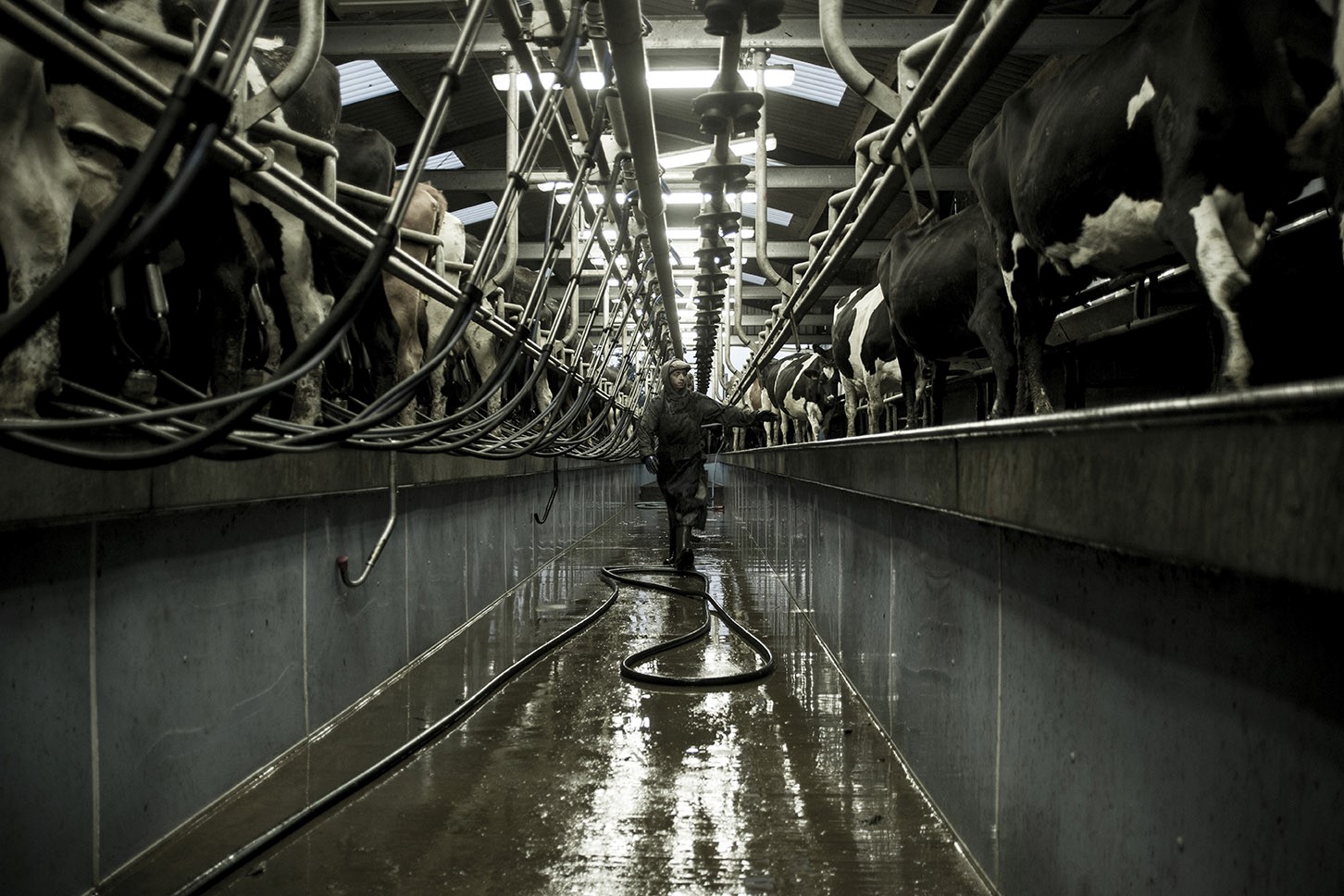Thinking about farm practices and dangers on your farm now and taking corrective action where necessary may help in reducing the risk to yourself, your family and your staff.
Fatigue and stress are deemed major risk factors when it comes to farm safety. In many cases, pressure mounts to get jobs done and farmers begin to take shortcuts. By taking some time now to plan for the months ahead, farmers can significantly reduce everyday risks on our farms.
Pre calving season preparation
Here is a list of some items that can be actioned now to help reduce the workload when calving begins.
- Wash, disinfect and bed both the calving area and calf sheds
- Check your calving gate is working properly
- Have your calving kit ready – including a jack, leg ropes, gloves and lubrication
- Have your tags ordered
- Have a tagger, tags, navel disinfectant, stomach tube and electroytes in the calf shed
- Have a working fridge/freezer to store colostrum
By drawing up a quick pre-calving checklist you can be well prepared in advance. Some farms will have begun to train the heifers into the milking parlour and use it as an opportunity to clip their tails. This has real advantages as it will simplify the management of heifers once they calve down.

Prevention against livestock related injuries
According to the HSA during the period of 2008 to 2017 approximately 13% of fatal farm accidents were livestock related, with half of those involving cows and heifers. The greatest risk is around calving. While these are all familiar practices, it is worth reminding ourselves how we can stay safe on our farms this spring and ask ourselves the following questions:
- Is an adequate physical barrier established between the farmer and freshly calved cow when treating or handling calves?
- Is there an escape plan from the calving pens?
- Are appropriate animal handling facilities in place, for example, crush, head scoop and calving gate?
- Are facilities and procedures adequate for loading and unloading animals?
- Are staff aware of all of the above and committed to adhering to safe practices?
As much of the calving activity happening during short days, or at night, farmers are encouraged to have plenty of well positioned lights around the farmyard as this will greatly improve visibility and safety. Good handling facilities and holding areas where cows can be monitored remotely are important. Further advice from the HSA includes; never turning your back on the cow when handling the newborn calf, and in so far as possible, keep a gate or barrier between you and the cow when removing the calf. The use of calving units with calving gates will ensure safety and reduce stress on farmers and the animal.
Germinal wishes all our customers a safe and prosperous year ahead.
For more information on farm safety practices go to:
Thinking about farm practices and dangers on your farm now and taking corrective action where necessary may help in reducing the risk to yourself, your family and your staff.
Fatigue and stress are deemed major risk factors when it comes to farm safety. In many cases, pressure mounts to get jobs done and farmers begin to take shortcuts. By taking some time now to plan for the months ahead, farmers can significantly reduce everyday risks on our farms.
Pre calving season preparation
Here is a list of some items that can be actioned now to help reduce the workload when calving begins.
- Wash, disinfect and bed both the calving area and calf sheds
- Check your calving gate is working properly
- Have your calving kit ready – including a jack, leg ropes, gloves and lubrication
- Have your tags ordered
- Have a tagger, tags, navel disinfectant, stomach tube and electroytes in the calf shed
- Have a working fridge/freezer to store colostrum
By drawing up a quick pre-calving checklist you can be well prepared in advance. Some farms will have begun to train the heifers into the milking parlour and use it as an opportunity to clip their tails. This has real advantages as it will simplify the management of heifers once they calve down.



Prevention against livestock related injuries
According to the HSA during the period of 2008 to 2017 approximately 13% of fatal farm accidents were livestock related, with half of those involving cows and heifers. The greatest risk is around calving. While these are all familiar practices, it is worth reminding ourselves how we can stay safe on our farms this spring and ask ourselves the following questions:
- Is an adequate physical barrier established between the farmer and freshly calved cow when treating or handling calves?
- Is there an escape plan from the calving pens?
- Are appropriate animal handling facilities in place, for example, crush, head scoop and calving gate?
- Are facilities and procedures adequate for loading and unloading animals?
- Are staff aware of all of the above and committed to adhering to safe practices?
As much of the calving activity happening during short days, or at night, farmers are encouraged to have plenty of well positioned lights around the farmyard as this will greatly improve visibility and safety. Good handling facilities and holding areas where cows can be monitored remotely are important. Further advice from the HSA includes; never turning your back on the cow when handling the newborn calf, and in so far as possible, keep a gate or barrier between you and the cow when removing the calf. The use of calving units with calving gates will ensure safety and reduce stress on farmers and the animal.
Germinal wishes all our customers a safe and prosperous year ahead.
For more information on farm safety practices go to:
